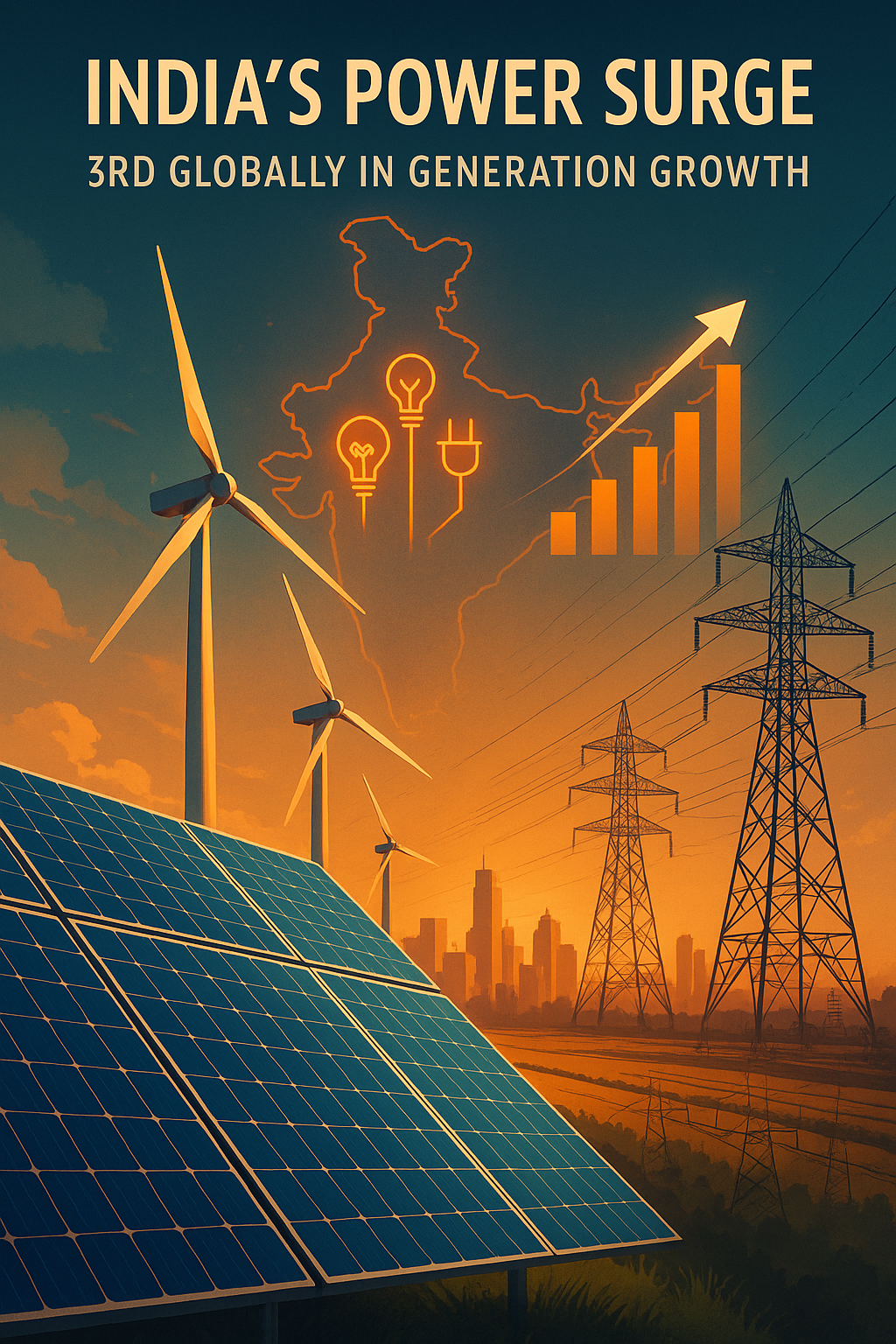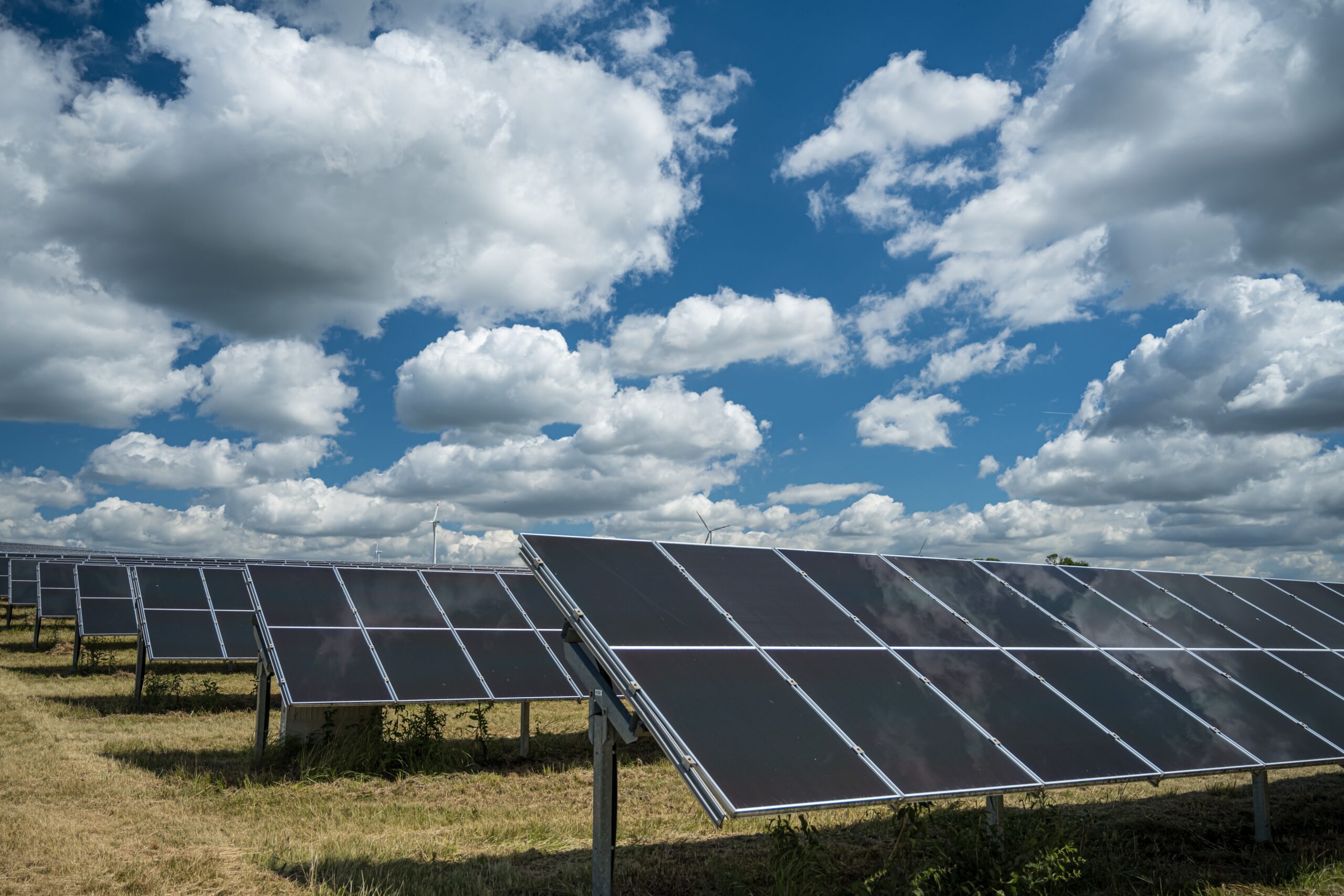India has emerged as a global powerhouse in electricity generation, ranking third in power capacity growth worldwide over the past five years. Only China and the United States have seen higher absolute increases in power generation during this period, according to the latest report from the International Energy Agency (IEA). This remarkable performance underscores the rapid evolution of India’s energy landscape, driven by soaring domestic demand, forward-looking policy decisions, and a strong pivot toward clean and renewable energy sources.
The IEA’s comprehensive analysis paints a clear picture: India’s energy growth is not only robust but also increasingly sustainable. As commercial and residential infrastructure continues to expand across the country, electricity consumption has surged. Rising urbanization, improved access to energy, and the proliferation of household appliances, especially air conditioners, have significantly contributed to the rise in electricity demand. Industrial activity has also picked up, further boosting the need for reliable and scalable energy solutions.
Drivers of India’s Power Generation Demand Surge
India’s electricity consumption is being fueled by multiple socioeconomic trends. The country’s growing middle class is gaining greater purchasing power, leading to increased ownership of power-hungry appliances like refrigerators, washing machines, and air conditioners. At the same time, rapid urban development has led to a boom in commercial and residential buildings that require reliable power infrastructure.
Industrial growth, particularly in sectors like manufacturing, chemicals, and data centers, is another key contributor. Many industries have shifted toward automation and digitization, both of which require significant electricity input. Additionally, state-level electrification programs and increased connectivity in rural regions have brought millions of households onto the power grid, further expanding the demand base.
The confluence of these factors has led to an unprecedented rise in electricity consumption, compelling the government and private sector to increase power generation capacity swiftly across all forms of energy, both conventional and renewable.
Renewable Energy Leading the Charge

One of the most striking aspects of India’s energy expansion is its growing reliance on renewable energy. The IEA report highlights that clean energy, particularly solar photovoltaic (PV) projects, has been a central focus of investment in recent years. Solar PV alone accounted for more than 50% of non-fossil energy investments in the past five years, a clear indicator of the country’s strategic direction.
In 2024, an impressive 83% of all power sector investments in India were directed toward clean energy initiatives. This includes not only solar PV but also wind, hydropower, and emerging technologies like green hydrogen. The growth of solar energy has been especially rapid due to falling panel costs, improved efficiency, and government incentives like the Production Linked Incentive (PLI) scheme and viability gap funding for large-scale projects.
India has also adopted aggressive targets under its Nationally Determined Contributions (NDCs), pledging to reach 500 GW of non-fossil fuel capacity by 2030. Current trends suggest that the country is well on its way to meeting this goal, if not surpassing it.
Financial Backing and Development Support
To support this transition, financial inflows have played a vital role. The IEA report points out that India was the largest recipient of development finance institution (DFI) funding for clean energy projects in 2024. The country attracted around USD 2.4 billion in project-specific funding during the year, much of it aimed at solar and wind initiatives, energy storage solutions, and grid modernization.
These funds are typically channeled into long-term infrastructure projects that might otherwise struggle to secure financing from traditional commercial lenders due to their size, complexity, or risk profile. International institutions such as the World Bank, Asian Development Bank (ADB), and International Finance Corporation (IFC) have all played key roles in financing India’s clean energy transformation.
In parallel, domestic financial institutions have ramped up lending to green projects, thanks in part to government-backed frameworks like green bonds and priority sector lending classifications for renewable energy.
Surge in Foreign Direct Investment (FDI)
The private sector has also responded positively to the government’s reformist approach. Foreign direct investment (FDI) in India’s power sector reached USD 5 billion in 2023, nearly double the amount recorded before the COVID-19 pandemic. This rise reflects growing investor confidence, especially as the government has opened up 100% FDI in power generation (excluding nuclear energy) and power transmission infrastructure.
International energy giants and global investors have been increasingly participating in India’s energy space, either through joint ventures or as independent power producers. Companies from the United States, Europe, and the Middle East have invested in solar parks, battery storage systems, and electric vehicle (EV) charging networks, among other infrastructure.
The Make in India initiative and localization requirements for solar equipment manufacturing have also drawn interest from global players looking to establish manufacturing units within the country.
Policy Support and Regulatory Framework
India’s policy framework has played an instrumental role in making the energy sector attractive to both domestic and international investors. The government has introduced a series of structural reforms aimed at improving ease of doing business in the power sector. These include:
- 100% FDI approval in power generation and transmission (excluding nuclear)
- Reverse bidding auctions for renewable energy to ensure price transparency
- Tax incentives and capital subsidies for renewable projects
- Mandatory renewable purchase obligations (RPOs) for distribution companies
In addition, several state governments have offered additional incentives such as land at concessional rates, single-window clearance systems, and waivers on transmission charges for renewable power. These initiatives have improved investor sentiment and helped fast-track projects across the country.
Challenges: Foreign Portfolio Investment and Sectoral Risks
Despite the strong fundamentals, the IEA report also notes a decline in foreign portfolio investment (FPI) in India’s energy sector over the past two years. This decline is attributed to a mix of global macroeconomic uncertainties, interest rate fluctuations, and some sector-specific concerns like payment delays from distribution companies (DISCOMs) and regulatory bottlenecks in certain states.
Still, the long-term outlook remains positive. The consistent flow of FDI, growing domestic demand, and a strong policy framework are likely to offset short-term hiccups. Furthermore, reforms in the DISCOM sector, including plans for privatization and performance-linked incentives, are expected to improve the financial health of the entire power value chain.
Outlook: India’s Energy Future Is Bright and Green
India’s position as the third-largest contributor to global power generation growth reflects both the scale of its development and the maturity of its policy framework. With rising electricity demand, particularly from urban centers and industries, the country is taking significant steps to ensure that its energy supply keeps pace—without compromising environmental sustainability.
The increasing shift toward renewable energy, particularly solar PV, signals a clear intent to decarbonize the energy mix while maintaining affordability and accessibility. The strong inflow of both foreign and domestic investment, backed by supportive policy measures, creates a robust foundation for continued growth.
The road ahead will require careful navigation through challenges such as grid integration, DISCOM reforms, and technology adoption. However, if current trends continue, India is poised not just to meet its domestic energy needs but also to lead the way in shaping global clean energy solutions.
Reference: Economic Times
